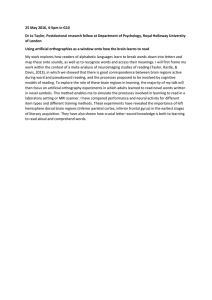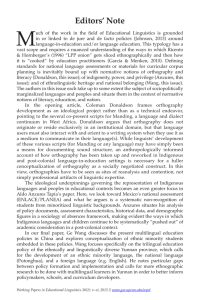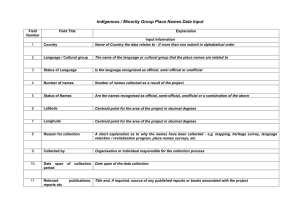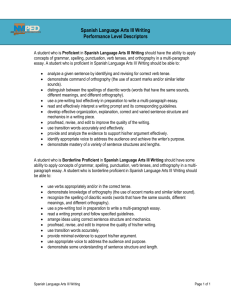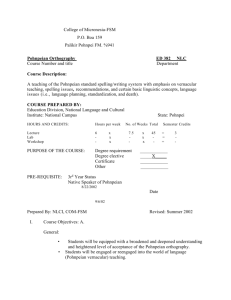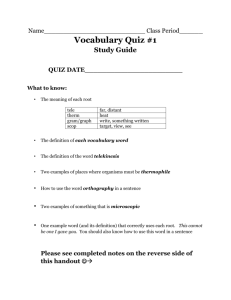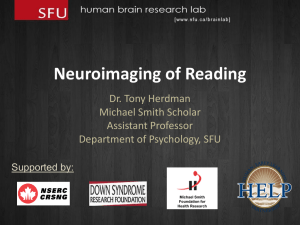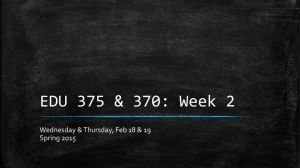Orthography Development as an Ongoing Collaborative Process: Lessons from Bangladesh John M Clifton
advertisement
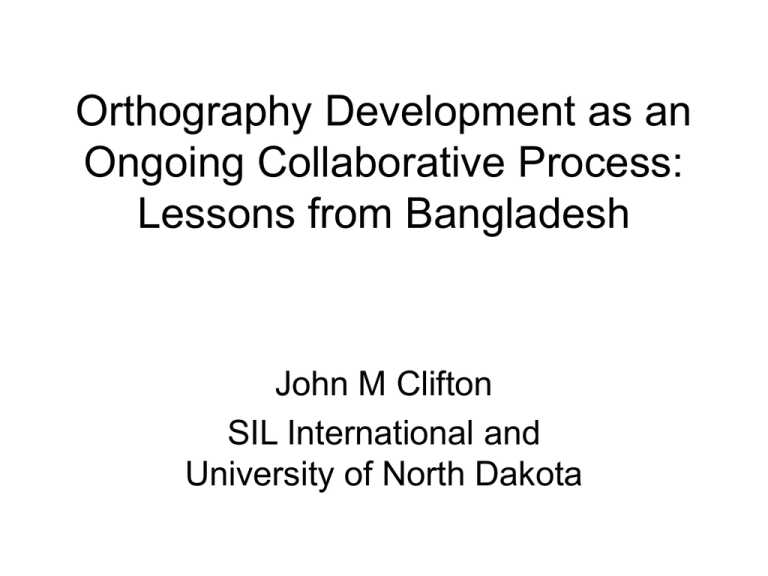
Orthography Development as an Ongoing Collaborative Process: Lessons from Bangladesh John M Clifton SIL International and University of North Dakota Orthography based on Linguistics • The reform of the orthographies of the Eastern Tucanoan languages is a good example of the need for a thorough linguistic analysis as a basis for orthography development and for the advantage of an orthography that respects the particular structure of the languages as opposed to the one that uses conventions of orthographies of surrounding languages with established orthographies. (Siefart 2006:288) Foundations of Traditional Model • Language community plays secondary role • Based on technical linguistic analysis • Linguistic analysis done by an outside linguist • Linguist develops proposal for community approval • Orthography is viewed as a final product Foundations of Collaborative Model • Practical orthography based on local practices • Orthography development proceeds in parallel with orthography use • Linguist works with orthography users to determine distribution of letters • Users determine problem points • Orthography is an evolving system Languages in Project Tibeto-Burman Lolo-Burmese Bodo-Garo Kuki-Chin Isolate Indo-Aryan Bengali-Assamese Marma Kok Borok Bawm Khyang Mru Chakma Tanchangya Previous Orthographies • • • • • • Marma: Burmese Kok Borok: Bangla, switching to Latin Bawm/Khyang: Latin Mru: Latin & Unique (t g y M b d a f k h i) Chakma: Unique (k Ki gu G AM ce CR j JZ Y) Tanchangya: Unwritten Orthography Development Workshops • Five day workshops • Representatives from multiple languages at each • Concurrent literacy materials workshop • Three activities: – Consultant/participant sessions – Participants work on orthography assignment – Participants work on literacy materials Workshop Objectives • Identify digraphs ‒ /pʰ tʰ kʰ/ are <ফ থ খ> in Bangla but <ph th kh> in Bawm • Compile lists of symbols in relevant environments – Language specific criterion: Syllable-final consonants in Chakma are identified by ‘killer bar’: knF /kɑn/ ‘ear’, rmFjune /rɑmʤuni/ ‘rainbow’ • Identify overdifferentiation; indeterminacy Workshop Objectives • Identify underdifferentiation ‒ Ask for lists of words, one for each sound Kok Borok: <awan> ‘rice cake’ /ɑwɑn/ <san> ‘bush sp.’ /sɑ̃/ ‒ Give options: underdifferentiation, digraph, diacritic ‒ Group decides how to represent Kok Borok decision: <awan> vs. <sân> Khyang Multiple Orthographies • Currently use Latin orthography • Minority opinion: Develop unique alphabet ..\..\..\..\..\Desktop\New Khyang.pdf • No diacritics, plus resolves multiple uses of <h> – – – – /h/ (syllable initial) voiceless aspirates part of <ch> digraph for affricate /ʧ/ Mark syllable-final /ʔ/: <zeh> /zeʔ/ 'loved' Conclusions • People are willing to change when they determine there are good reasons to. • Native speakers can be brought into the process at an early stage if the object of analysis is the orthography, not the linguistic system. • Both native speakers and linguists are needed for the process to work. • Orthography should be viewed not as a final product, but as an evolving process.
